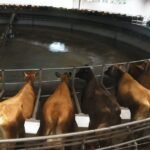Sustainable Infrastructure: Mapping U.S. Investments
Investing in sustainable infrastructure has become a key focus for many countries around the world. As the global population continues to grow and urbanize, there is an increasing need for infrastructure that can support economic growth while minimizing its impact on the environment.
The United States is no exception to this trend, with significant investments being made in sustainable infrastructure projects across the country. A recent report by Visual Capitalist provides an insightful overview of these investments, highlighting the areas that are receiving the most attention.
One of the key findings of the report is that the majority of sustainable infrastructure investments in the United States are focused on transportation and energy sectors. This comes as no surprise, as these two areas are critical for economic development and have a significant environmental impact.
In the transportation sector, investments are being made to improve public transportation systems, develop electric vehicle infrastructure, and enhance the efficiency of existing road networks. These initiatives aim to reduce greenhouse gas emissions, alleviate traffic congestion, and promote sustainable modes of transportation.
The energy sector is also seeing substantial investments in sustainable infrastructure. The United States is transitioning away from fossil fuels and towards renewable sources of energy such as wind, solar, and hydroelectric power. Investments are being made to develop new renewable energy projects, upgrade existing infrastructure, and improve energy efficiency.
Apart from transportation and energy, the report also highlights investments in sustainable water and waste management infrastructure. These projects aim to ensure a reliable supply of clean water, treat wastewater effectively, and promote recycling and waste reduction.
Interestingly, the report also reveals regional disparities in sustainable infrastructure investments. The West Coast, particularly California, leads the country in terms of funding for sustainable projects. This can be attributed to the region’s progressive policies and strong commitment to combating climate change.
On the other hand, some regions in the Midwest and South have been slower to adopt sustainable infrastructure initiatives. This could be due to various factors, including a lack of awareness, limited resources, or differing priorities.
Despite these regional disparities, it is encouraging to see the overall increase in sustainable infrastructure investments across the United States. As the urgency to address climate change becomes more apparent, it is crucial for the country to continue prioritizing sustainable development and investing in infrastructure that supports a low-carbon future.
In conclusion, sustainable infrastructure investments in the United States are primarily focused on transportation and energy sectors, with additional attention given to water and waste management. While there are regional disparities in these investments, the country as a whole is making progress towards a greener and more sustainable future. By continuing to prioritize and support these investments, the United States can play a leading role in building a resilient and environmentally friendly infrastructure for generations to come.




